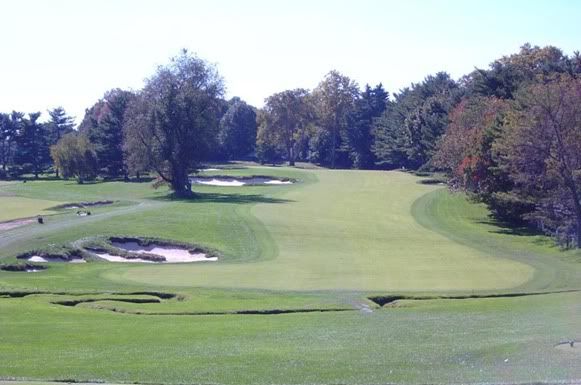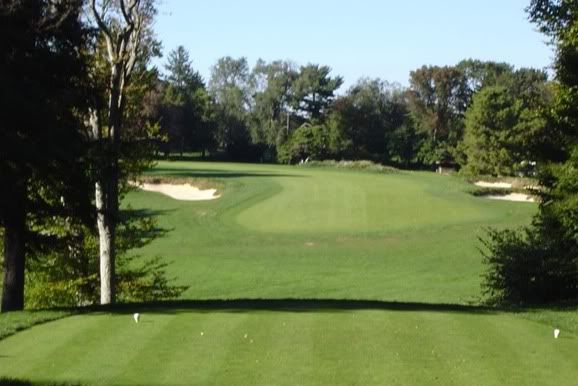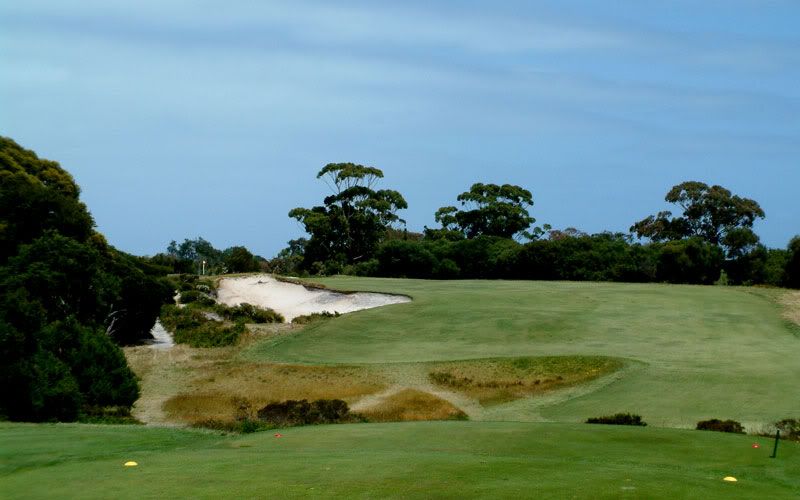Chip and others interested,
Iíve not got copies of all the pictures Iím referring to, but have been able to source some similar images from various online sites.
Theyíll illustrate my point for the time being.
The initial image Iíd like to discuss is one of the 2nd hole.

Why not maintain fairway cut extending slightly beyond the left edge of the left fairway trap?
Also - why not have the trunk of the tree on the left of the fairway within the fairway cut margin?
The next is the 10th.
Why not broaden the fairway cut, from just outside the left edge of the left fairway trap,
extending to just outside the right edge of the right fairway trap?

Correct me if Iím wrong (remember Iíve not been to Merion before). Is the 10th a short dog leg left which is driveable for some? With trouble for those who aim left and fall short? If so, does the area short left of the green need to be maintained as it is currently? Isn't the shot from there hard enough with a good lie anyway?
It seems from the pictures that the depth of rough, and fairway shaping strongly dictates a long iron to the corner,
and a wedge to the green, and nothing else. Could it not be maintained akin to practices at Royal Melbourne West #10?

Again, not having been to Merion, I accept I may be completely wrong.
Iím not sure what hole this is, but I feel the look of the fairway is very manufactured.
A relatively narrow and straight ribbon of fairway between two larger expanses of uniform lush rough.

At the very least, the fairway cut and transition to rough should be more natural and irregular, to my way of thinking anyway.
I also think the fairway should be wider. Excuse my ignorance, but appearances suggest the fairway could be near triple its width.
What harm would it cause?
Iím not interested in discussion of recent rains and rough growth. The cut lines are my concern.
Iím much more of a school of thought that would present a broader playing expanse, so as to ask the golfer on the tee where they think it is best to place a drive. As opposed to a proscriptive narrower fairway cut which tells golfers where they should and should not hit it.
Wider corridors also provide greater playability for a broader range of golfers. Mowing in such a way is unlikely to impact upon costs of course upkeep at Merion, at least to my reckoning, given that the rough looks cultivated and carefully managed in the images above.
Would rough of less depth and 'appetite' also afford players who have missed a fairway, to more seriously entertain thoughts of a brave and skilled recovery? As things seem, and certainly sounded (if my fellow GCAer and an online blogger or two are any indication), Merionís rough provides a ďhack it out sideways and try for the green on the shot after thatĒ currently.
Am I getting it wrong?
There's also a great image of 16 which supports my view, if my memory serves me correctly.
I'll try to find it and post it.
In the meantine, I'll call upon Mr. Binette as a witness, posting in another thread about the course.
because of the severity of the hazards and the roughs, the fairways are hard to hit
it's not about choosing a line of play, but how patient or agressive you want to be, especially under pressure
Chip, I felt sick, as I felt there was a truly great course being smothered by rough.
It was a genuinely deep feeling, and the notion of our sandbelt courses being kept in such a way would horrify me.
MM